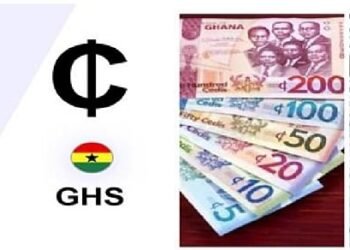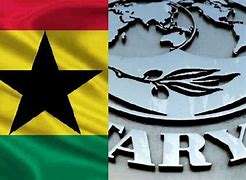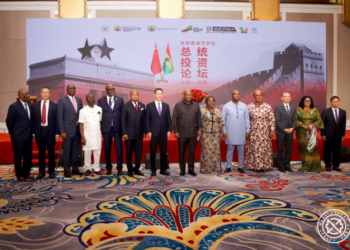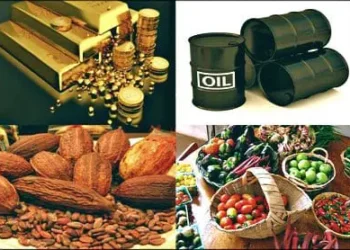Compensation of Employees which includes wages and salaries, pensions & gratuities, and other wage-related expenditure, continues to consume a chunk of government’s revenues each year with last year’s payment constituting 47.5 percent of domestic revenues mobilized in the country.
According to data from the Bank of Ghana, the government spent a total of GH¢31,663.3 million on compensation of its employees in 2021, higher than the target of GH¢31,490.8 million. Compensation of employees as a percentage of domestic revenues last year was however, lower than the 52.4 percent recorded in the corresponding period of 2020.
Overall, government Expenditure spending and arrears clearance in 2021 amounted to GH¢110,401.70 million (25.1% of GDP), below the target of GH¢113,750.23 million (25.9% of GDP). This means the outturn was 97.1 percent of the target and represented a year-on-year growth of 10.3 percent.
In terms of expenditure components, BoG disclosed that expenditure on Goods and Services was GH¢8,624.1 million in 2021, higher than the expected target of GH¢8,523.2 million. The outturn was 1.2 percent above the target and also represented a year-on-year decline of 16.7 percent.
As expected, government spent more on debt servicing last year than it projected. According to the Bank of Ghana, total interest payments of GH¢33,619.3 million in 2021 was higher than the envisioned target of GH¢32,528 million. The composition of interest payments perfectly depicts the current state of government’s debt which is mainly held by domestic actors.
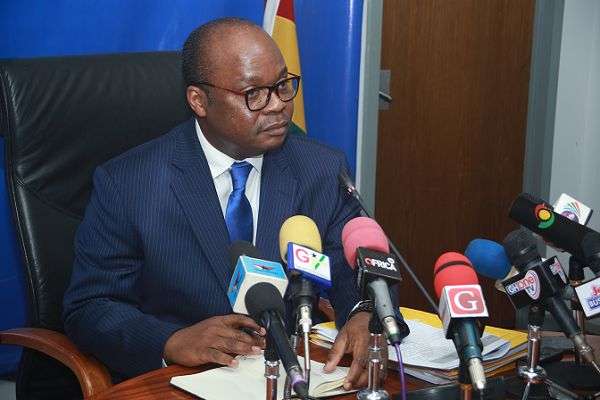
“Domestic interest payments accounted for 78.9 percent of the total interest payments, while external interest payments constituted the remaining 21.1 percent. Total interest payments constituted 50.4 percent of domestic revenue, up from 45.6 percent in the corresponding period of 2020”.
Bank of Ghana
A further breakdown of government’s expenditure last year, shows that Grants to other Government units made up of National Health Fund, Education Trust Fund (GET Fund), Road Fund, Energy Fund, District Assemblies Common Fund (DACF), Retention of IGFs, transfer to GNPC and other earmarked Funds, all summed up to GH¢13,314.2 million.
This was lower than the envisioned target of GH¢18,081.4 million and represented a shortfall of 26.4 percent. It, however, recorded a year-on-year growth of 12.1 percent.
Other Expenditure, made up of ESLA Transfers and COVID-19 related expenditure for 2021, totaled GH¢4,537.7 million, which was 33.2 percent below the target of GH¢6,791.9 million.
A rise in Capital expenditure
One aspect of government’s expenditure that remains low is capital expenditure. However, last year’s fiscal operations showed that the country is making some gains in investing in capital expenditure projects even though the domestic-financed portion remains low.
The BoG stated that capital expenditures of GH¢15,541.5 million (3.5% of GDP) for the review period was higher than the envisaged target of GH¢12,222.1 million (2.8% of GDP) by 27.2 percent. This outturn represented a year-on-year growth of 28.6 percent. Foreign-financed capital expenditure accounted for 65.7 percent of the total, with domestic financed capital expenditure making up the remaining 34.3 percent.
Public debt analysis
The stock of public debt, according to BoG, was equivalent to 78.4 percent of GDP at the end of 2021 compared with 76.1 percent of GDP at the end of 2020. The stock of public debt increased to GH¢344.6 billion at the end of November 2021 from GH¢291.8 billion at the end of 2020. In terms of GDP, the total public debt as at End-November 2021 was 78.4 percent, higher than the 76.1 percent registered in December 2020.
The domestic component of total public debt was GH¢179.4 billion (40.8% of GDP), representing a year-to-date increase of 19.6 percent and accounting for 52.1 percent of the total public debt at the end of November 2021, according to BoG.
“The increase in domestic debt was driven by increases of GH¢5.9 billion and GH¢22 billion, respectively, in the short- and medium-term instruments. In terms of the holding structure, the year-to-date rise in the domestic debt reflected in increased holdings in the Banking and Non-Bank sectors”.
Bank of Ghana
On year-to-date basis, external debt increased by GH¢23.4 billion from GH¢141.8 billion (37.0% of GDP) at the end of December 2020 to GH¢165.1 billion (37.6% of GDP) as at November 2021. External debt also constituted 47.9 percent of total public debt at the end of November 2021, compared to 48.6 percent in December 2020.
On a whole, BoG assessed that “expenditures seemed well contained” last year but called for a well-balanced fiscal consolidation this year and beyond.
“Going forward, there is the need to carefully balance fiscal consolidation with growth initiatives by coordinating both fiscal and monetary policies more effectively to achieve the desired macro-economic benefits”.
Bank of Ghana
Government’s recent proposal of up to 20 percent cut in discretionary spending could support consolidation but must be tactfully executed in order not to affect growth-oriented programmes, the central bank advised.
READ ALSO: Court Grants Interlocutory Injunction Against UTAG Strike




